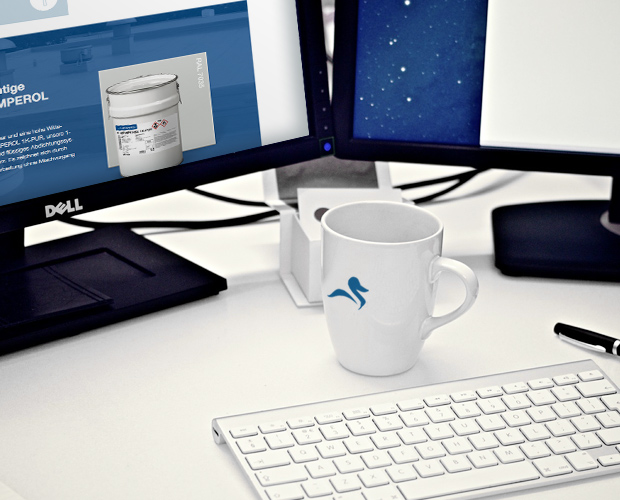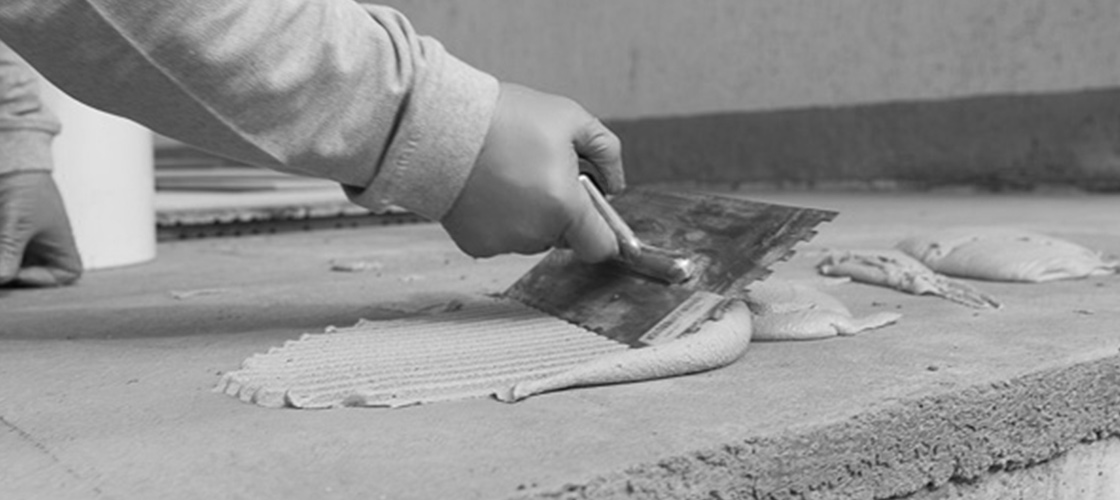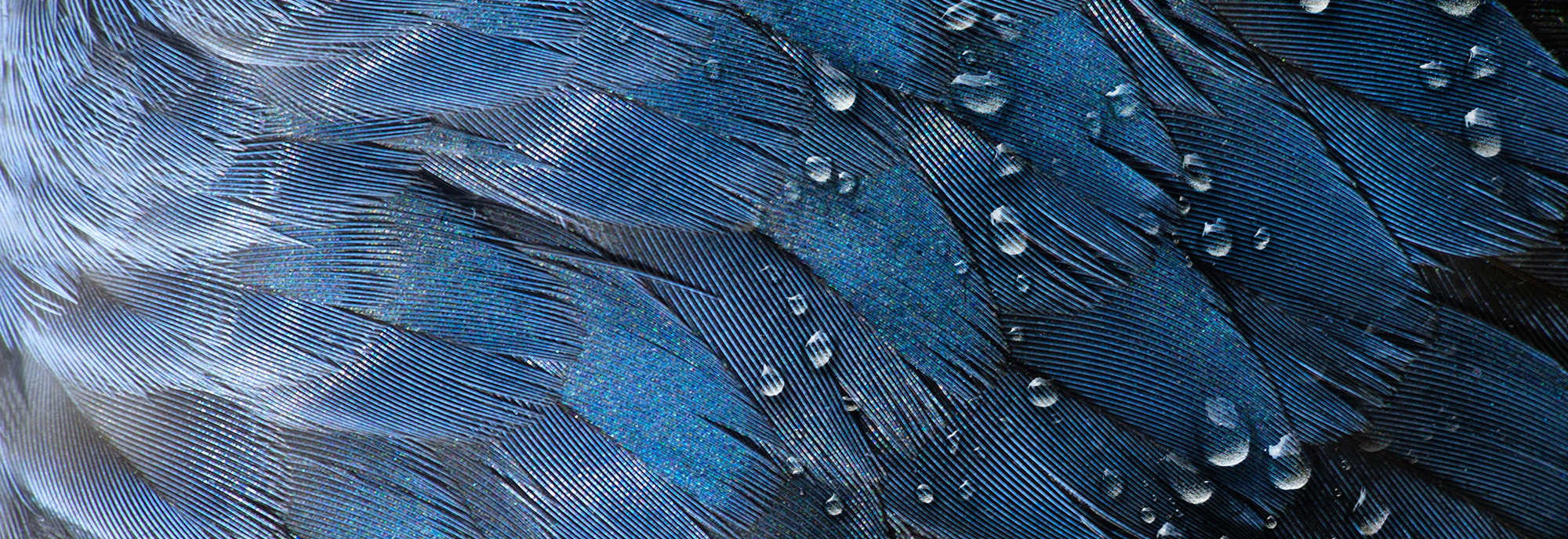Our answers to your questions
If you have any questions, our competent employees will be happy to help you with words and deeds. Sometimes, however, taking a look at the “Frequently Asked Questions” that we have already answered does the trick. Take a look, maybe this will help you directly!

Application
How is KEMPEROL processed?
All KEMPEROL seals are processed cold. All are reinforced with KEMPEROL fleece, which means that the KEMPEROL waterproofing is processed in a two-layer process (original – fleece insert – subsequent layer) wet-in-wet or fresh-in-fresh.
Can a KEMPEROL waterproofing with a KEMPERDUR coating be applied to a bitumen membrane?
No. When using a KEMPERDUR coating as a final covering, a load-bearing and solid substrate is always required. This is not the case with a bitumen seal. Bitumen sheeting can, for example, soften in summer due to high temperatures, which in turn can lead to imprints from point loads appearing in the KEMPERDUR surface and even damage (cracks, etc.). In addition, bitum particles could “bleed through” and reach the surface (visible area). For example, if another covering such as slab coverings in a bed of gravel, wooden slatted frames, etc., where point loads are already absorbed by the covering, is to be used as a wear layer, bitumen waterproofing can be sealed with KEMPEROL waterproofing without further ado.
How can I remove or mix partial quantities?
In the case of one-component products, e.g. KEMPEROL 1K-PUR, partial quantities can be removed without any special measures. In the case of multi-component products, the partial quantities of the individual components must be weighed out in advance.
How does a complete KEMPER SYSTEM structure for balconies and terraces have to be manufactured?
A complete structure consists of a primer, sealing and a coating. A KEMPERTEC EP / EP5 primer is usually used as a primer. In general, attention should be paid to the primer recommendation. The KEMPEROL 1K-PUR or KEMPEROL 2K-PUR seal is used as a seal. There are different coating systems according to customer requirements. These are KEMPERDUR Deco or KEMPERDUR Deco 2K Coating, KEMPERDUR HB Thick Coating, KEMCO Decor Stone, KEMPERDUR Quartz Coating or KEMPERDUR TC with different variants. However, a complete AC structure is also possible. This consists of KEMPERTEC AC primer, KEMPEROL AC Speed sealing, KEMPERDUR AC coating and KEMPERDUR AC finish.
How long does the KEMPERTEC primer need until it is rainproof and can be further coated?
This depends on the respective primer and the weather conditions with regard to the substrate, ambient and processing temperature. Please refer to the technical data sheet for the respective primer for the times.
Up to what temperature can KEMPEROL seals be processed?
From 5°C upwards. KEMPEROL AC Speed can be processed down to an ambient temperature of -5°C. The dew point must be taken into account.
From when and until when can further coating be carried out?
Here the period of time for the earliest possible application of a subsequent layer / wear layer is specified. This period of time is determined on the one hand by the achievement of sufficient strength or hardening and on the other hand by the outgassing (evaporation) of solvents that may be necessary. Subsequent coats should be applied within a 14 day period depending on weather conditions.
Waterproofing & surfacing systems
Are KEMPERDUR products colour fast?
Colour fastness refers to the resistance and stability of the colour to (UV) light and environmental influences ("light-fast"). Our decorative KEMPERDUR products are designed to be UV resistant and colour fast.
Where can you purchase KEMPEROL products?
From specialist trade merchants (usually roofing merchants).
How much does KEMPEROL Waterproofing cost compared to other waterproofing systems?
KEMPEROL waterproofing systems are high-quality products and therefore cost more than conventional waterproofing products that consist of sheeting.
Is there a fast waterproofing system available (PMMA)?
KEMPEROL AC Speed is currently the fastest PMMA-based waterproofing system. As an alternative, application of odourless KEMPEROL 2K-PUR can be accelerated by using KEMPEROL 2K-PUR Speedshot.
Are KEMPEROL products UV resistant?
The ageing resistance to light (UV light) according to ETAG 005 has been proven for our waterproofing products.
Are KEMPEROL waterproofing systems root proof?
All KEMPEROL waterproofing systems are root proof and tested to FLL standards.
Primers
Why should two-component primers be scattered with sand?
It is generally recommended to scatter two-component primers with an appropriate product. Scattering sand onto the surface is absolutely necessary for all epoxy resin-based products (KEMPERTEC EP Primer / KEMPERTEC EP5 Primer). By scattering natural quartz (1500-2000 g/m²) onto the primer, a surface with the appropriate roughness is achieved ensuring an optimum adhesive bond with the next layer.
This also serves as a protection of the primer against UV radiation, especially if longer work interruptions (longer than 2 weeks) are necessary.
How long does it take for KEMPERTEC Primer to be rainproof and ready to receive the next coat?
That obviously depends on the respective primer and the weather conditions while taking into account the substrate, ambient and application temperature. Please refer to the technical data sheet of the respective primer for the times.
Which primer must be used?
Individually according to substrate and waterproofing product, but generally a KEMPERTEC EP or KEMPERTEC EP5 Primer. In general, the priming recommendations must be observed.
Why do KEMPERTEC EP Primers have to be scattered with quartz sand?
The even scattering of KEMCO Natural Quartz in the still fresh primer is necessary for the following reasons. KEMPERTEC EP Primers must be scattered with sand due to the chemical properties of the epoxy resins, since it is not possible to determine an exact time window for resurfacing a non-scattered EP primer. In addition, scattering ensures a larger surface for enhancing waterproofing adhesion. Furthermore, the scattering of quartz sand protects the primer against environmental influences, such as UV radiation and mechanical stress.
Others
What does pot life mean?
The pot life of reactive materials is the time during which the product can be applied. It is sometimes also called "period of use". It is therefore the time between mixing a multi-component product (or, in the case of one-component products, the opening of the container) and the end of its usability, i.e. the period of time in which the substance can still be "taken out of the pot". In most cases, the end of the pot life is indicated by a significant increase in viscosity (increase in toughness), which prevents further application. With our products, the pot life and workability time are not generally the same. The change in viscosity influences the absorbency and saturation behaviour considerably (in relation to the substrate or fleece)
As a rule of thumb, products with a viscosity significantly greater than that of liquid honey should no longer be applied.
Do KEMPEROL waterproofing systems comply with DIN standards and regulations, e.g. DIN 18531?
Almost all KEMPEROL waterproofing systems are approved products and display European Technical Approvals. KEMPEROL 2K-PUR, KEMPEROL 1K-PUR, KEMPEROL AC Speed, KEMPEROL BR correspond to the rules regarding waterproofing materials and the regulations of current waterproofing standards (DIN standards 18531 - 18535). For some KEMPEROL waterproofing systems there are general test certificates available for various applications.

You could not find the answer to your question?
If you still have any questions, simply contact our sales staff or application engineers! Our employees are always happy to help.

